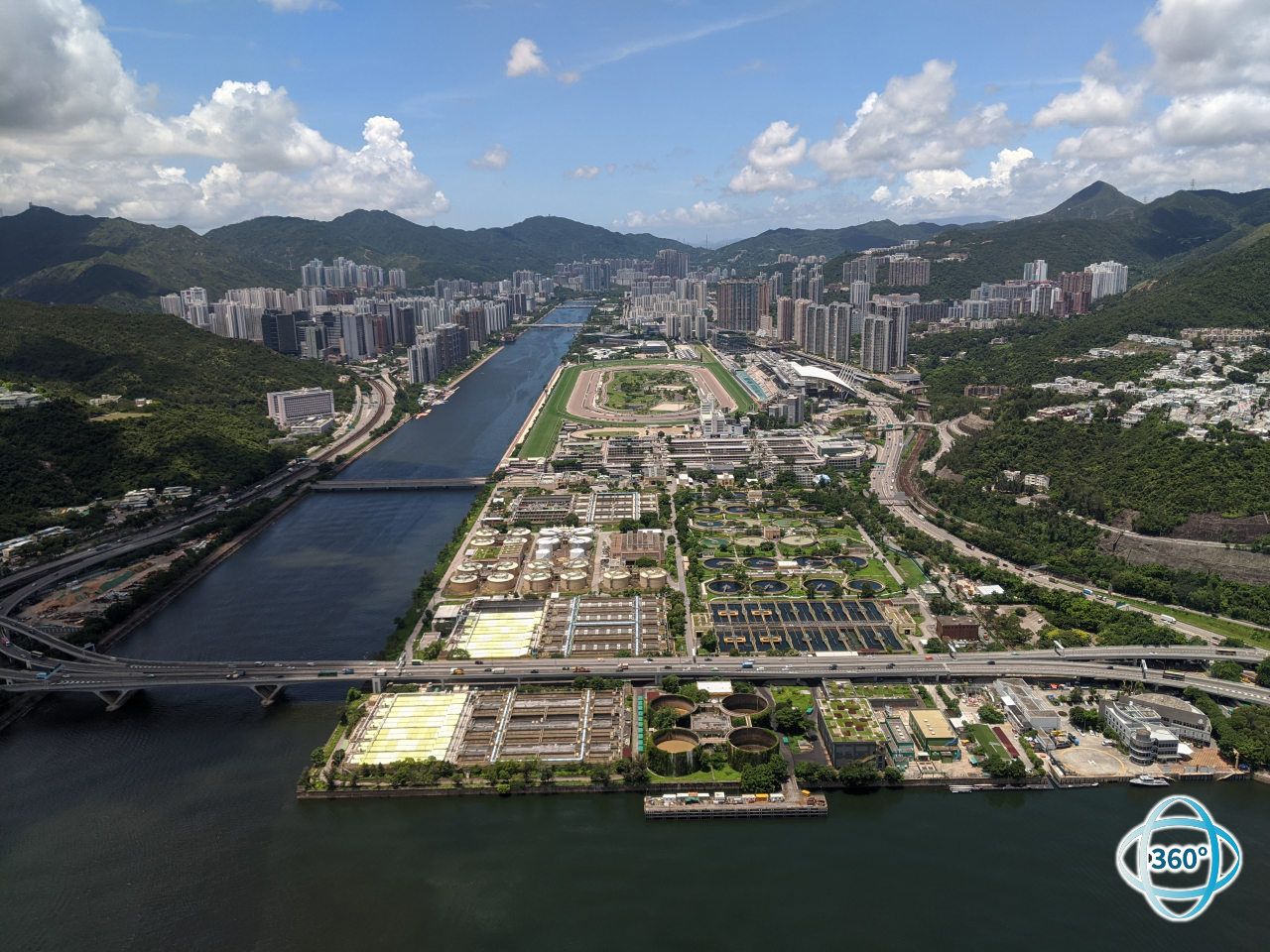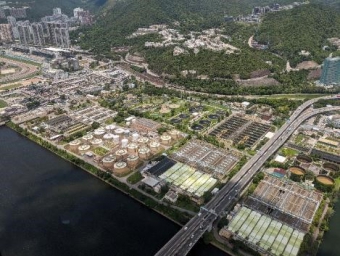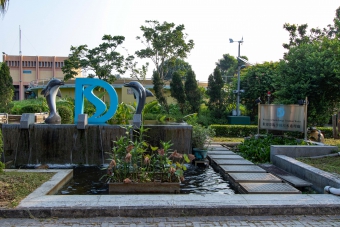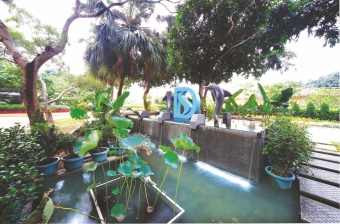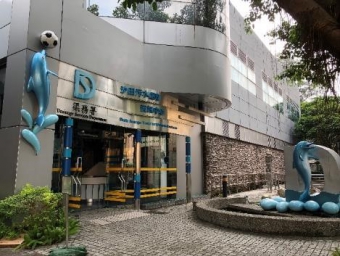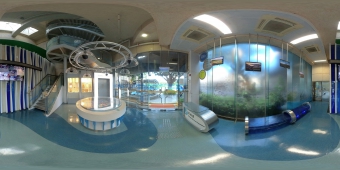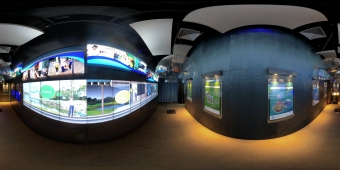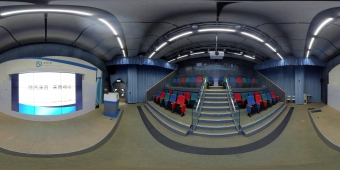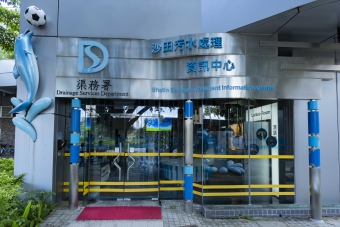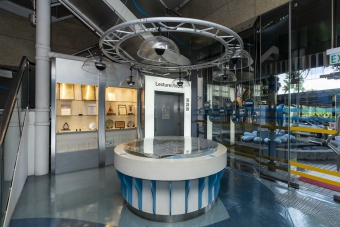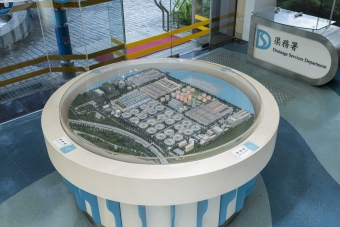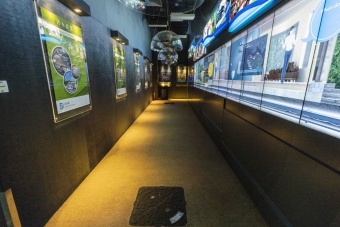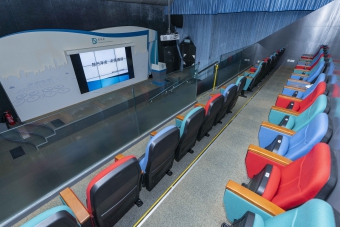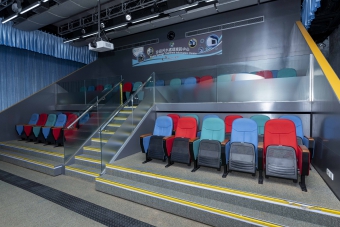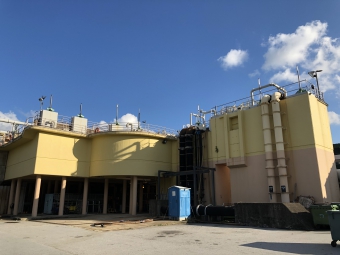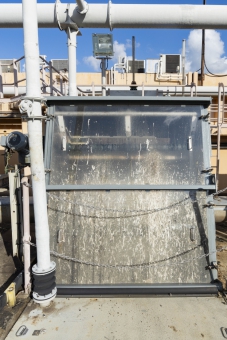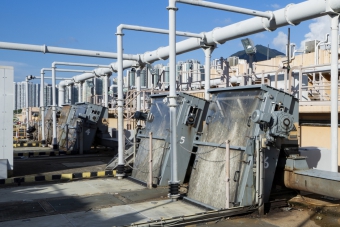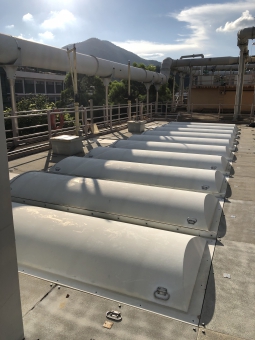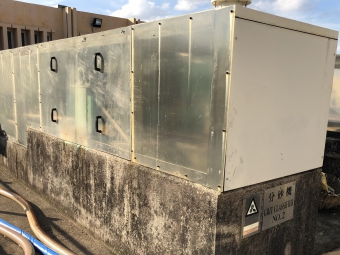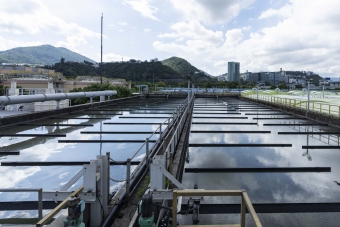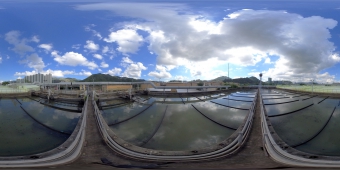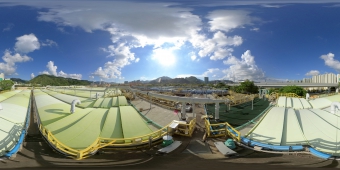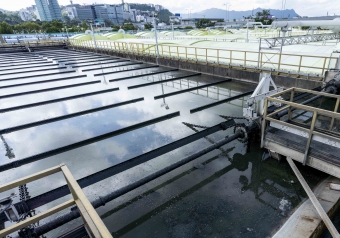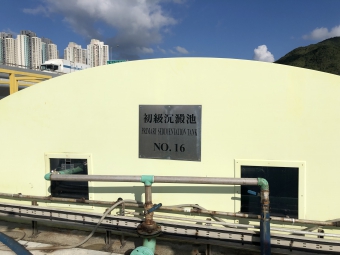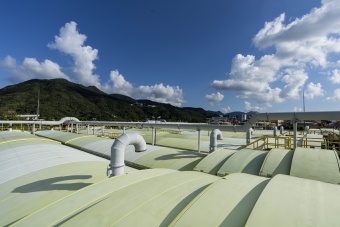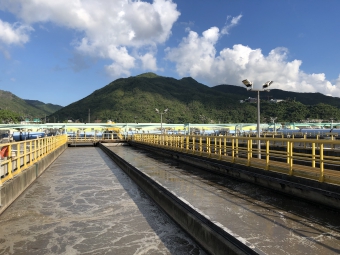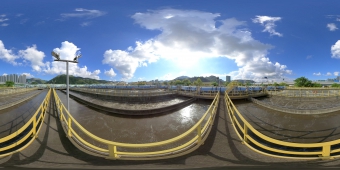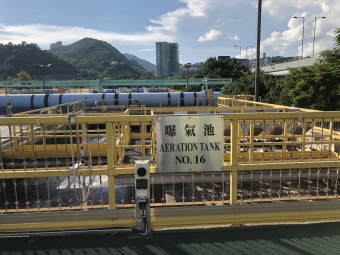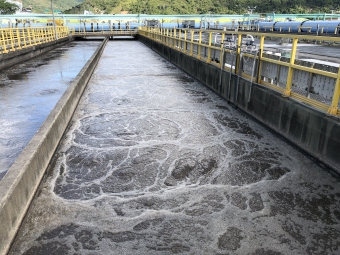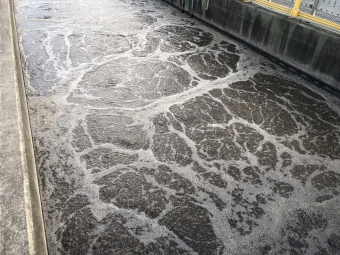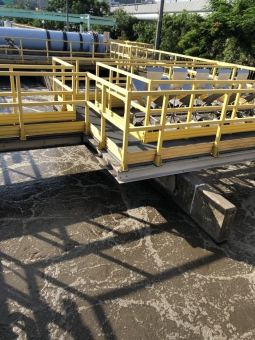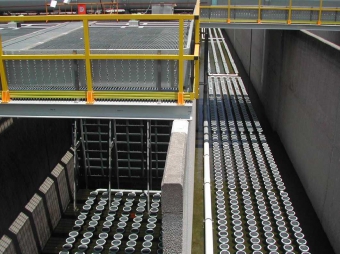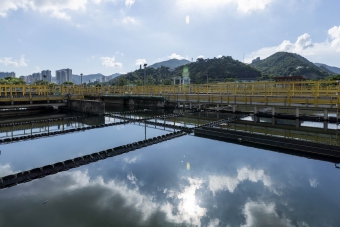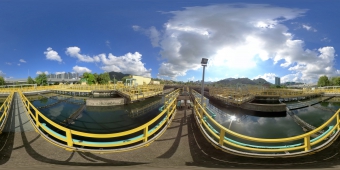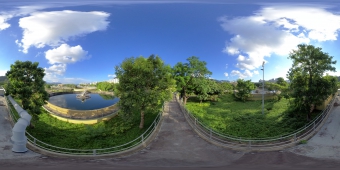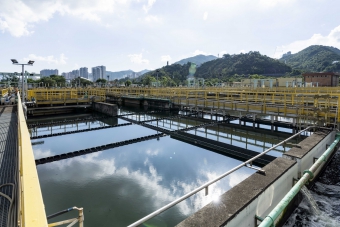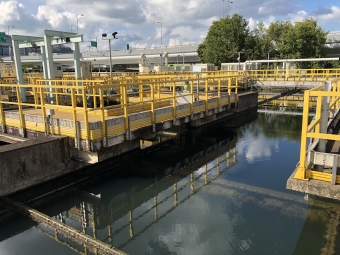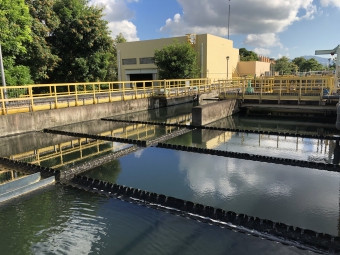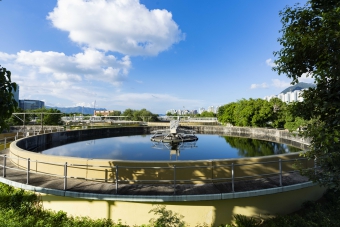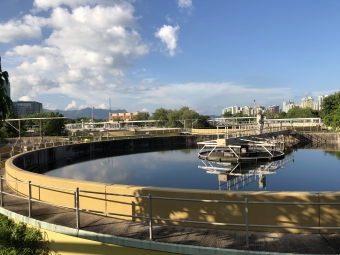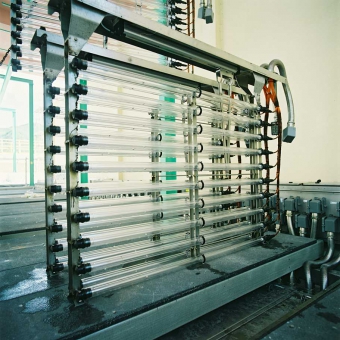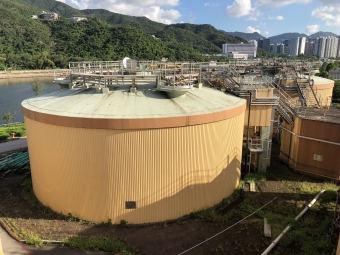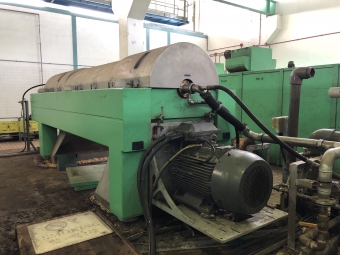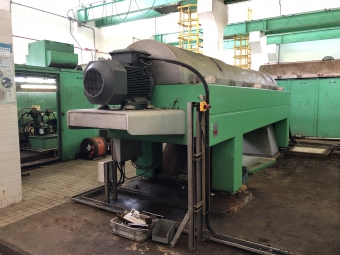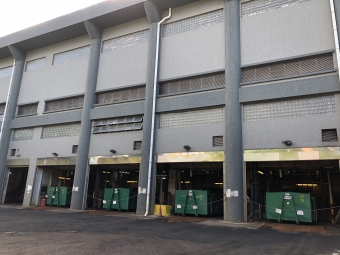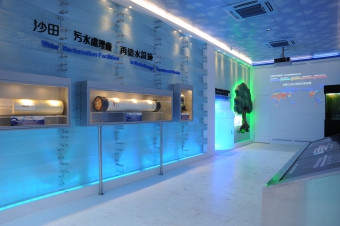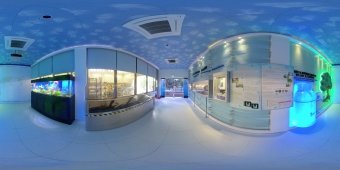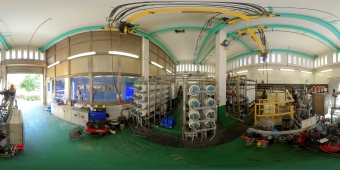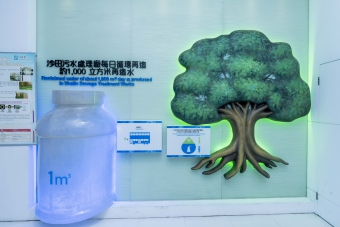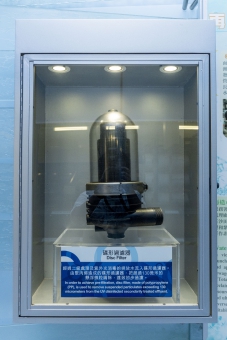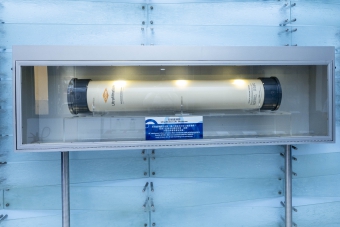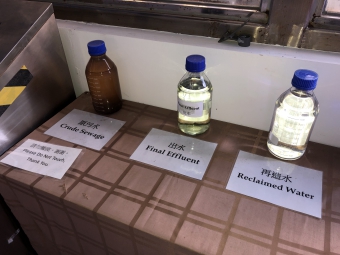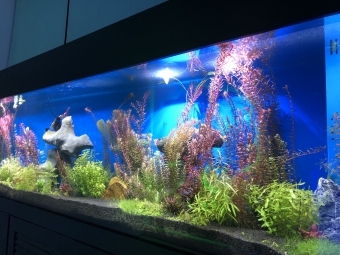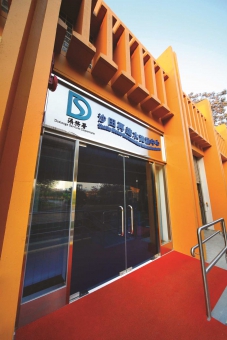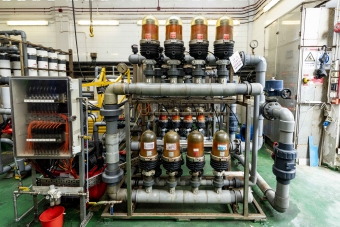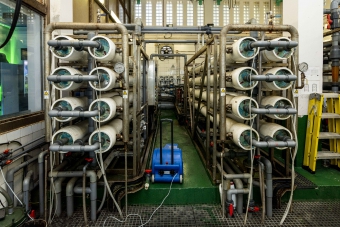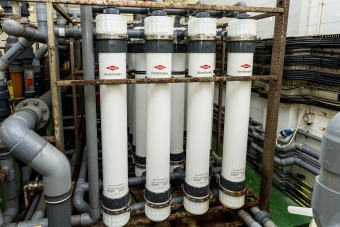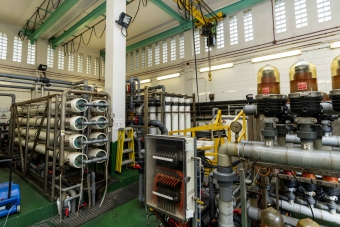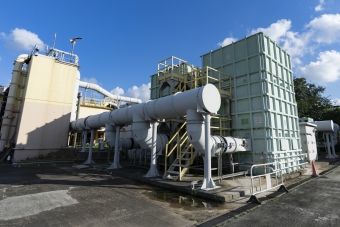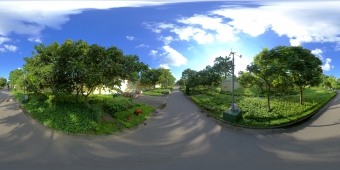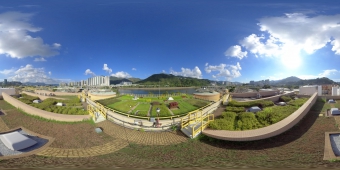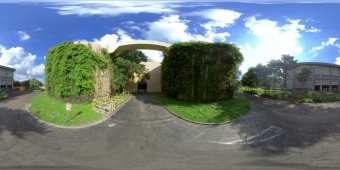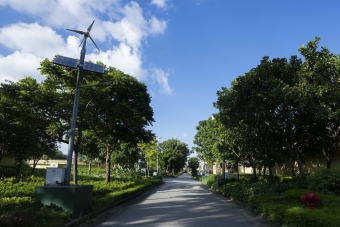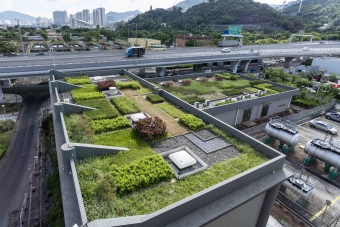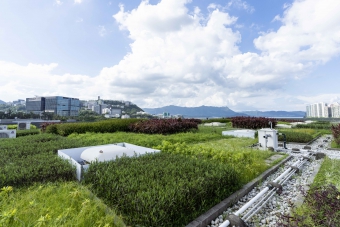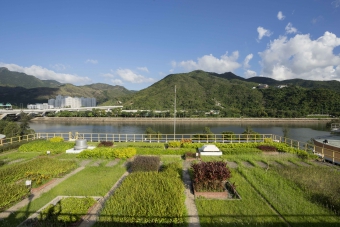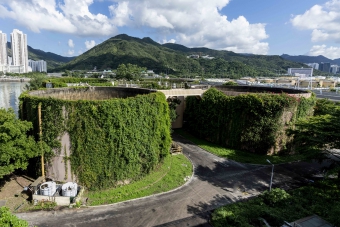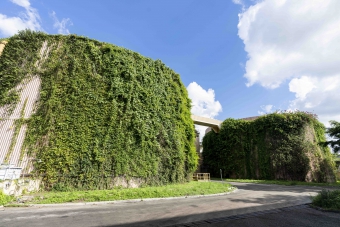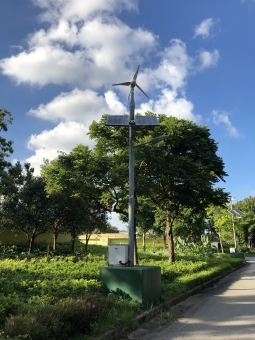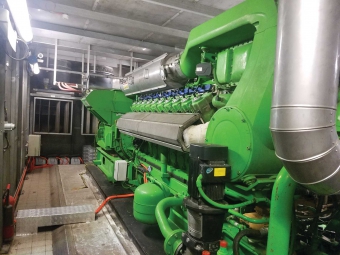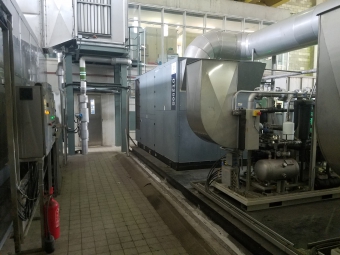Sha Tin Sewage Treatment Works
Experience 360-degree Virtual Tour Now!
Ready for an adventure with us to explore the largest secondary sewage treatment works in Hong Kong?
Click the following photo of Sha Tin Sewage Treatment Works to join our virtual tour now and experience the operation and characteristics of Sha Tin Sewage Treatment Works in 360-degree anytime and anywhere.
Sha Tin Sewage Treatment Works (STSTW) is the largest secondary sewage treatment works in Hong Kong. It occupies 28 hectares of land and serves a population of 650,000 in Sha Tin and Ma On Shan Districts, which produces 260,000 cubic metres of sewage per day. More
STSTW was commissioned in 1982. The treatment capacity was 100,000 cubic metres per day and was later increased to 200,000 cubic metres per day in 1986. In order to improve the marine environment of the Tolo Harbour, the aeration tanks were upgraded to equipped with nutrient removal facilities in 1991. This, however, reduced the treatment capacity to 150,000 cubic metres per day.
To manage the population expansion of Sha Tin and Ma On Shan Districts, STSTW commenced its Stage III Extension in 2001. Upon completion of the extension in 2011, its treatment capacity subsequently increased to 340,000 cubic metres per day. To further improve the effluent quality, an ultraviolet disinfection system was also installed in the extension works.
Through model exhibitions, videos and site visits, Sha Tin Sewage Treatment Information Centre promotes the public to understand the operation of sewage treatment and increase environmental awareness.
The theme of the Information Centre has included an overview of the Drainage Services Department’s works and sewage treatment process. The Information Center is divided into two main areas, namely Exhibition Gallery and Lecture Room. Exhibition Gallery uses multimedia means to briefly describe the DSD’s works in flood control, sewage services and sustainability. Lecture Room can accommodate up to 50 guests to explain the sewage treatment process before attending the site visits.
In primary sedimentation tanks, about 50% of the suspended solids in the preliminarily treated sewage are settled out and removed as primary sludge by sludge scraping mechanisms.
Secondary (Biological) Treatment takes place in an aeration tank. In aeration tanks, compressed air is fed continuously to provide oxygen essential to sustain the growth of micro-organisms (activated sludge), which will assimilate organic pollutants in the sewage. The retention time at the aeration tank is about 9 hours.
Treated sewage and activated sludge are separated in the final sedimentation tanks. A controlled portion of the activated sludge is fed back to the aeration tank to maintain adequate micro-organism population for biological treatment. The remaining portion (named as Surplus Activated Sludge, SAS) is thickened to reduce volume before treatment in the sludge digesters.
Treated sewage from final sedimentation would undergo the disinfection process in the UV disinfection system so that the effluent quality could meet the discharge standard prescribed by the Environment Protection Department and further improve the water quality of the discharged water zone.
The primary sludge and thickened Surplus Activated Sludge are pumped into the sludge digesters for anaerobic digestion. Biogas containing methane, which is renewable energy, is produced during the digestion.
Digested sludge is dewatered to a minimum dryness of 30% by centrifuges to reduce water content and volume before the transportation to the T・Park for incineration.
In line with the Government's initiative to use reclaimed water under the Total Water Management Strategy, Drainage Services Department launches a relatively large-scale pilot scheme on production and application of reclaimed water at Sha Tin Sewage Treatment Works (STSTW).
The water reclamation facilities in the STSTW, which were commissioned in early 2011, mainly comprising three filtration parts, namely disc filters, ultra-filtration membranes and reverse osmosis membranes, and are capable of generating 1,000 cubic metres of reclaimed water every day. Reclaimed water produced at STSTW is a water resource which has undergone secondary treatment and ultraviolet disinfection, and has been purified by reverse osmosis in sewage treatment works. It is suitable for non-potable uses such as plant cleaning, irrigation, toilet flushing and chemical dilution.
Tolo Harbour Effluent Export Scheme (THEES) helps to solve the red-tide problem in Tolo Harbour in the 80s by conveying the treated effluent from Tai Po and Sha Tin Sewage Treatment Works (STSTW) to Victoria Harbour via a 3.2 metres diameter, 7.4 kilometres long tunnel and Kai Tak River. The water quality in Tolo Harbour has shown encouraging signs of improvement since the full implementation of the scheme in 1998.
Apart from sewage treatment, STSTW has endeavored to effectively reduce energy consumption and waste production throughout the sewage treatment process while minimising its impact on the neighbouring community and environment.
To achieve the goals above, STSTW has implemented many environmentally friendly measures. Combined Heat and Power Generator and Micro-turbine Generator are used to generate electricity and heat for plant operation by making use if the biogas produced during sludge treatment process. Furthermore, a number of de-odourisation units are installed to improve our services and the living environment of the neighourhood.
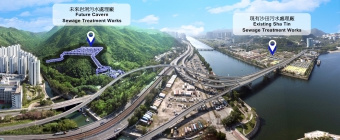
Relocation of Sha Tin Sewage Treatment Works to Caverns

Stage 1 Works - Site Preparation and Access Tunnel Construction
To support Hong Kong’s sustainable development, the Government is actively exploring various approaches to develop new land resources. One possible approach is rock cavern development. The Drainage Services Department completed a feasibility study on the relocation of the Sha Tin Sewage Treatment Works (STSTW) to caverns in end 2013. The results confirmed that relocating the STSTW is technically feasible and financially viable. Two-staged public engagement exercises were conducted and collected the public opinions on the relocation project. After the feasibility study, the investigation and design works for the relocation project was commenced in September 2014.
The future cavern complex for the relocated STSTW (the relocated STSTW to be named “Sha Tin Cavern Sewage Treatment Works) will be the largest of its type ever built in Hong Kong. It will be constructed by stages, namely: site preparation and access tunnel construction; main caverns construction; upstream sewerage works; sewage treatment facilities installation; and decommissioning and demolition of existing STSTW. The project involves several professional engineering disciplines, and we will look into the possibility of introducing relevant advanced technologies and make reference to overseas experience with a view to optimising the benefits of the project.
Stage 1 Works including site preparation and access tunnel construction commenced in February 2019 and targeted for completion in the fourth quarter of 2022. We are continuing the detailed design for the remaining stages of construction works and seek funding approval to implement the remaining stages in a timely manner aiming to complete the whole project by 2031.
Schools and relevant organisations are welcome to visit Sha Tin Sewage Treatment Works through prior application. For details, please visit the following website:
For details about Sha Tin Sewage Treatment Works and Relocation of Sha Tin Sewage Treatment Works to Caverns, please visit the following website:
Leaflet of Sha Tin Sewage Treatment Works
Website of Relocation of Sha Tin Sewage Treatment Works to Caverns

